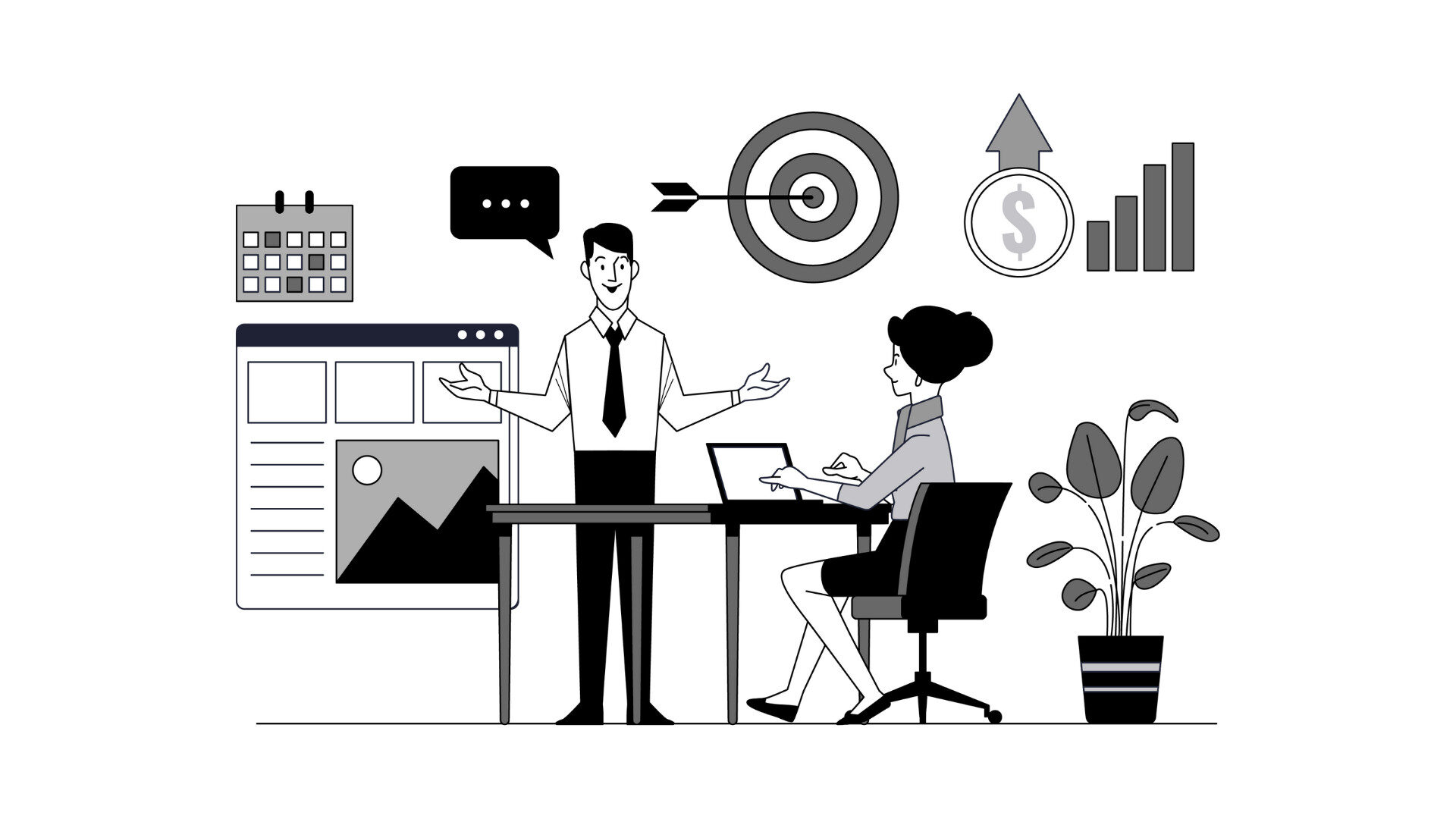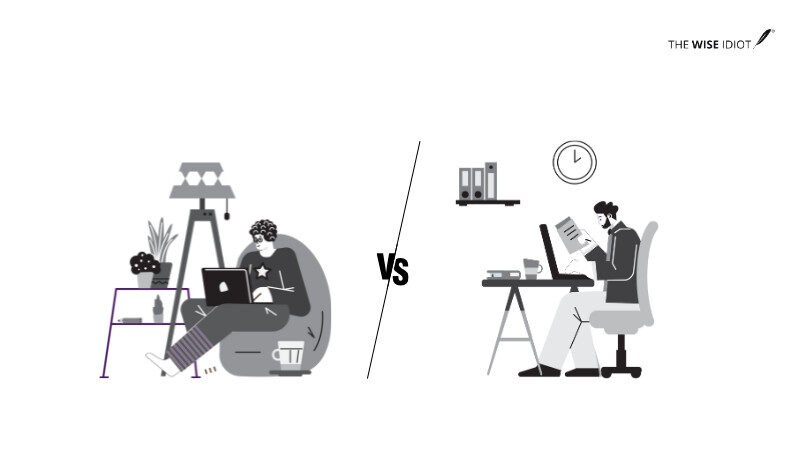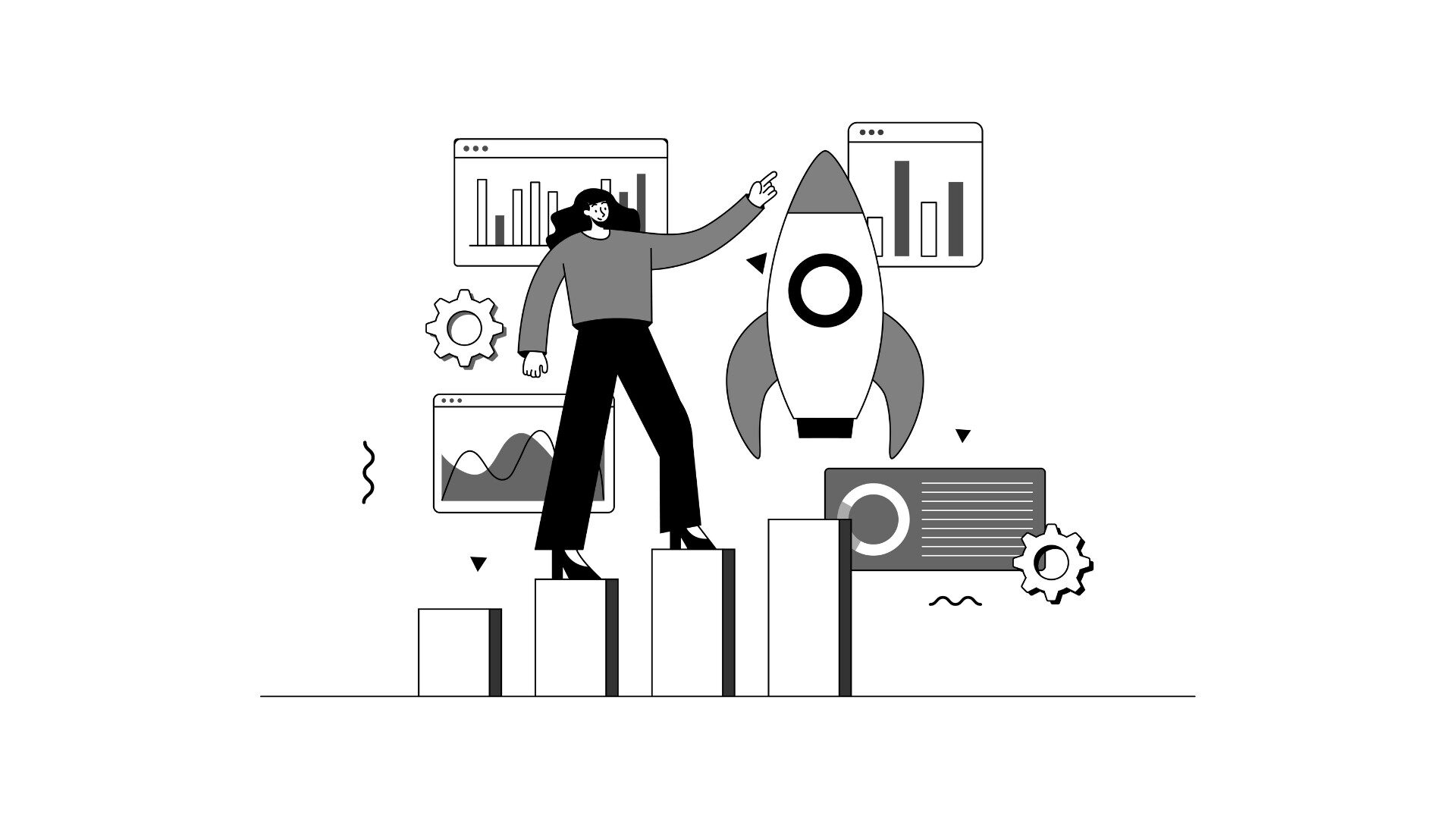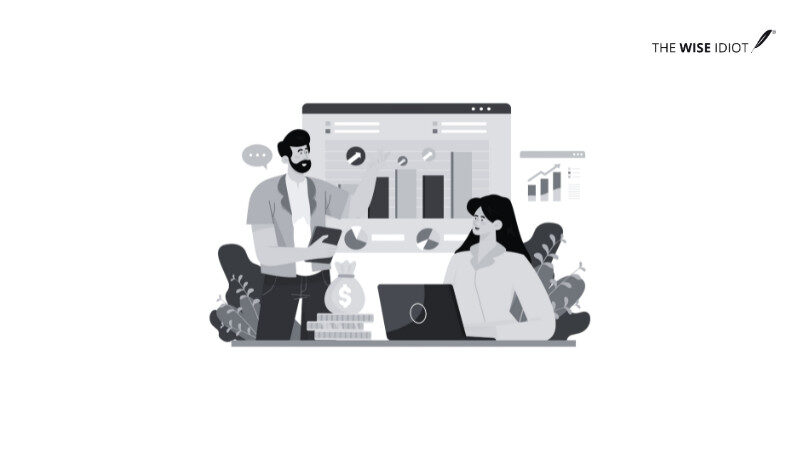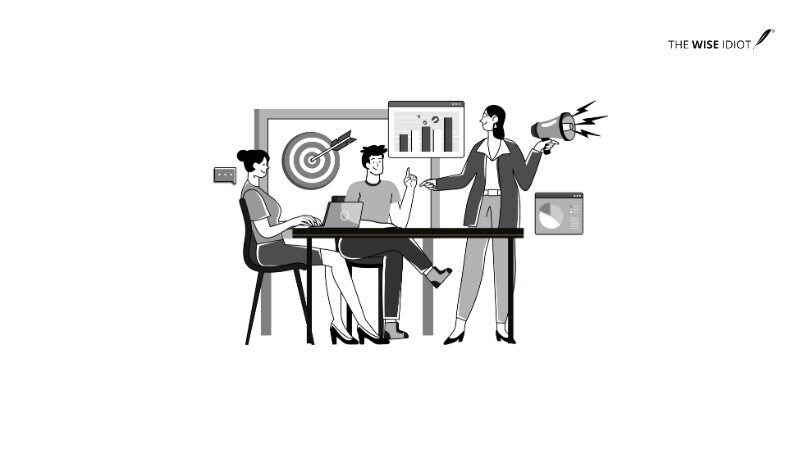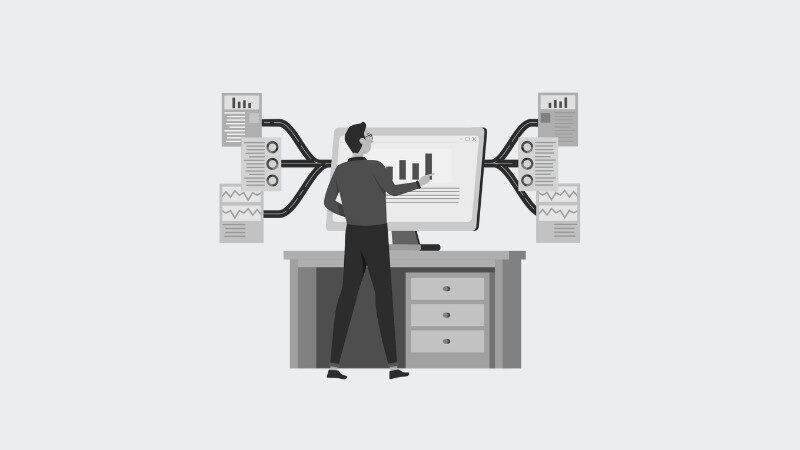Sometimes B2B marketing feels like a never-ending cycle of chasing leads. You launch a one-off campaign and then constantly explain to sales why MQLs didn’t convert.
This happens when teams are stuck in tactics mode without a clear, structured system to guide potential customers from “never heard of you” to “where do I sign?”
Since the buying cycles are long and decisions involve multiple stakeholders, this becomes even more important for B2B.
And that’s the purpose of a B2B marketing funnel. It helps you systematically attract, engage, convert, and retain business customers. But building this funnel requires a strategic blend of content, targeting, and alignment between marketing and sales.
In this blog, we’ll break down how to build a B2B marketing funnel that drives real business results.
Table of Contents
ToggleWhy a Structured B2B Marketing Funnel Matters
Imagine you’re selling an enterprise software platform. A single deal can take six months, involve half a dozen decision-makers, and require dozens of touchpoints. And if your activities are ad-hoc (let’s run a webinar or send a drip email), you’ll never know what’s working, what isn’t, or where prospects are getting stuck.
Neil Patel, co-founder of NP Digital, aptly states:
“You can’t just place a few ‘buy now’ buttons on your website and expect your visitors to turn into customers. You need a well-defined marketing funnel.”
A defined B2B marketing funnel:
- Aligns teams around shared stage-based goals (awareness, consideration, decision).
- Creates measurable touchpoints so you know which channels and content drive the real pipeline.
- Facilitates handoffs between Marketing, BDEs, Sales, and RevOps with clear SLAs.
- Enables continuous optimization via data (not guesses).
For Marketing Managers & Directors, this means predictable ROI on every penny spent. BDEs gain qualified, sales-ready leads at the right time. RevOps can pinpoint funnel leakage and boost efficiency. And Founders & Executives see a reliable pipeline forecast that ties directly to revenue targets.
At The Wise Idiot, a leading B2B Content Marketing Agency, we’ve helped clients streamline their buyer journey with a mix of LinkedIn marketing services, performance tracking, and conversion-focused content strategies.
Stages of a B2B Marketing Funnel
The B2B marketing funnel has three core stages—Top of the Funnel (TOFU), Middle of the Funnel (MOFU), and Bottom of the Funnel (BOFU)—followed by a post-funnel phase for retention and re-engagement.
1. Top of the Funnel (TOFU): Awareness
At the top of the funnel (TOFU), your job is simple: make your ideal prospects aware that they have a problem worth solving. Also, you understand that problem better than anyone else.
Objective: Capture attention, increase brand visibility, and generate leads.
Marketing Activities:
- Organic Content: Publish blog posts, YouTube videos, white papers, and ebooks to showcase thought leadership. Focus on educational content that addresses common pain points.
- Social Media: Leverage platforms like LinkedIn and Twitter to engage prospects and build authority.
- Paid Advertising: Use Google Ads or social media ads to amplify reach. Consider QR codes linking to landing pages or gated content.
- SEO: Optimize content for search engines to attract organic traffic.
Content Focus:
- Answer prospects’ questions with free, accessible content.
- Avoid aggressive sales pitches or requests for big commitments (e.g., scheduling demos).
- Build trust by providing value without expecting immediate returns.
Metrics to Watch
- Impressions, unique visitors, social shares
- Content downloads and webinar registrations
Example: A software company might publish a blog post titled “5 Common Challenges in Supply Chain Management” or offer a free ebook on industry trends.
2. Middle of the Funnel (MOFU): Consideration
Once prospects know they have a problem, they enter the middle of the funnel (MOFU). Now they’re evaluating options. Your goal is to demonstrate why your solution is the best fit (without turning into a hard sell).
Objective: Position your brand as the best solution by highlighting your value proposition.
Marketing Activities:
- Educational Content: Share white papers, industry reports, webinars, and case studies that demonstrate expertise.
- Product-Focused Content: Introduce your product subtly through product videos, quizzes, or surveys that highlight benefits.
- Email Marketing: Use drip campaigns to nurture leads with personalized content.
- Retargeting: Implement remarketing ads or cold email outreach to re-engage prospects.
- Website UX: Ensure your website is intuitive, professional, and trust-building.
Content Focus:
- Deliver targeted content that aligns with prospects’ decision criteria.
- Educate prospects on how your solution improves business outcomes.
- Provide tools (e.g., ROI calculators) to help prospects build internal business cases.
Metrics to Watch
- MQL conversion rate
- Email open and click-through rates
- Time spent on gated assets
Example: A cybersecurity firm might host a webinar on “How to Protect Your Business from Data Breaches” or share a case study showcasing a client’s success.
💡 Read how quality backlinks and mid-funnel SEO helped scale content visibility in our Backlink Building for SEO breakdown.
3. Bottom of the Funnel (BOFU): Decision/Action
At the BOFU stage, prospects are ready to make a decision. They’ve narrowed their options and need final proof that your solution is the right choice. Your job: remove friction, answer every objection, and make it easy to say “yes.”
Objective: Convert prospects into customers by providing reassurance and removing barriers.
Marketing Activities:
- Proof-Driven Content: Share testimonials, case studies, comparison guides, and demos to build confidence.
- Incentives: Offer free trials, consultations, quotes, or discounts to encourage action.
- Optimized Landing Pages: Create clear, conversion-focused pages with strong calls to action (CTAs).
- Personalized Support: Enable sales teams to engage directly with prospects.
Content Focus:
- Be direct with CTAs leading to purchase pages, consultations, or demos.
- Address lingering objections with social proof and data.
- Equip sales teams with content that simplifies decision-making.
Metrics to Watch
- MQL→SQL and SQL→Win conversion rates
- Average contract value
- Sales cycle length
Example: A SaaS company might offer a free trial with a guided onboarding session or share a comparison guide highlighting its advantages over competitors.
Beyond the Funnel: Retention & Re-engagement
The funnel doesn’t end with a sale. Retaining customers and nurturing unconverted leads are critical for long-term success. As Dharmesh Shah, CTO and co-founder of HubSpot, puts it:
“Many companies have forgotten they sell to actual people. Humans care about the entire experience, not just marketing, sales, or service.”
It emphasizes the importance of a holistic customer experience beyond the point of sale.
Activities:
- Customer Engagement: Provide onboarding materials, quarterly webinars, and best practice guides to ensure product success.
- Upselling/Cross-Selling: Highlight premium features or upgraded packages through targeted campaigns.
- Re-engagement: Use email remarketing to reconnect with leads who didn’t convert, offering new content or incentives.
How to Build a B2B Marketing Funnel: A Step-by-Step Guide
Follow these steps to build a funnel that drives results:
Step 1: Understand Your Buyer and Their Journey
- Define Buyer Personas: Identify your ideal customer, including industry, company size, revenue, pain points, and decision-makers. Engage sales and customer support teams to uncover common objections and questions.
- Map the Buyer’s Journey: Document the steps prospects take from problem awareness to purchase. Identify key touchpoints and decision criteria.
Step 2: Create Your Funnel Structure
- Outline Stages: Break the funnel into TOFU, MOFU, and BOFU, with clear criteria for progression (e.g., when a lead becomes a marketing-qualified lead, or MQL).
- Define Metrics: Establish KPIs for each stage, such as website traffic (TOFU), lead conversion rates (MOFU), and sales conversions (BOFU).
Step 3: Develop the Right Content
- Content Mapping: Create content tailored to each stage, ensuring it addresses prospects’ needs and aligns with their journey.
| Stage | Content Types |
| TOFU | Blogs, videos, ebooks |
| MOFU | Webinars, case studies, ROI calculators |
| BOFU | Demos, testimonials, comparison guides |
- Content Cadence: Plan the frequency and timing of content delivery to maintain engagement without overwhelming prospects.
Step 4: Craft Your Distribution Strategy
- Choose Channels: Focus on platforms where your audience is active, such as LinkedIn, email newsletters, or YouTube Shorts.
- Balance Organic and Paid: Invest in SEO for long-term growth and use paid ads (e.g., Google Ads, LinkedIn Ads) for immediate reach.
- Leverage Influencers: Partner with industry thought leaders to amplify your message.
Step 5: Set Up Lead Tracking and Automation
- Implement a CRM: Use tools like HubSpot or Salesforce to track leads, monitor drop-off points, and measure metrics like cost per acquisition (CPA).
- Automate Nurturing: Set up email sequences to deliver timely, personalized content. Avoid over-automation to maintain a human touch.
Step 6: Align Marketing and Sales
- Shared Definitions: Agree on criteria for MQLs and sales-qualified leads (SQLs) to ensure smooth handoffs.
- Data Sharing: Use CRM dashboards to provide visibility into lead progress.
- Regular Collaboration: Hold weekly or monthly check-ins to address issues and refine processes.
Step 7: Optimize Your Funnel
- Monitor Performance: Use tools like Google Analytics and CRM software to track KPIs and identify bottlenecks.
- A/B Testing: Test landing pages, emails, and CTAs to improve conversion rates.
- Feedback Loops: Survey lost leads to understand why they didn’t convert and use insights to refine your approach.
- Iterate Continuously: Treat optimization as a scientific process—hypothesize, test, and adjust.
Best Practices for a High-Performing B2B Marketing Funnel
- Personalize Content: Tailor messaging to specific industries, roles, or pain points.
- Focus on Value: Prioritize education and problem-solving over hard selling.
- Simplify the Process: Remove friction from the buyer’s journey with clear CTAs and intuitive UX.
- Leverage Data: Use analytics to inform decisions and predict trends.
- Stay Agile: Adapt to changing buyer behaviors and market conditions.
Enhancing Your B2B Marketing Funnel with 2025 Trends
To stay ahead, integrate these 2025 B2B marketing trends into your funnel:
Artificial Intelligence (AI) and Machine Learning
AI enables hyper-personalization and predictive analytics.
- TOFU: Use AI to identify trending topics for content creation
- MOFU: Personalize email campaigns based on lead behavior
- BOFU: Predict which leads are ready to convert
A Deloitte study indicates that highly personalized marketing strategies, when executed effectively, can generate up to eight times the ROI and boost sales by over 10%.
Video Content Dominance
As of August 2024, around 61% of B2B content marketers planned to invest more in video content in 2025 than the year before.
- TOFU: Create educational videos on industry challenges
- MOFU: Share product demos or webinars
- BOFU: Use customer testimonials
Account-Based Marketing (ABM)
ABM targets high-value accounts with personalized strategies.
- MOFU/BOFU: Use tailored content for key accounts
Simplified Marketing Automation
User-friendly funnel tools simplify automation for small businesses.
- All Stages: Automate email sequences and lead tracking
Data-Driven Personalization
Analytics improve targeting and conversion rates.
- All Stages: Use CRM data to segment audiences and tailor content
Aligning Teams and Technology
A funnel is only as strong as your cross-functional collaboration and tech stack.
| Function | Responsibility | Handoff Criteria |
| Marketing | Create and nurture leads | Lead meets MQL score |
| BDE | Qualify leads and set meetings | Lead converted to SQL |
| Sales | Close business | Opportunity “Closed-Won” |
| RevOps | Analyze performance | Weekly funnel report |
| Execs | Strategic oversight | Quarterly review |
Integrate CRM, marketing automation, and analytics so data flows seamlessly. Hold weekly syncs, share dashboards, and iterate SLAs based on real performance.
Practical Example: Building a Fintech Marketing Funnel
Company: FinPay, a fintech startup offering digital payment solutions for small businesses.
Objective: Increase user acquisition and retention through a structured marketing funnel.
1. Awareness Stage (Top of Funnel – TOFU)
- Strategy: Publish SEO-optimized blog posts like “5 Ways Digital Payments Streamline Small Business Operations.”
- Channels: Promote content via LinkedIn Ads targeting small business owners.
2. Consideration Stage (Middle of Funnel – MOFU)
- Strategy: Host a webinar titled “Navigating Digital Payment Solutions for SMEs.”
- Follow-up: Send personalized emails with a link to a whitepaper on digital payment benefits.
3. Decision Stage (Bottom of Funnel – BOFU)
- Strategy: Offer a 30-day free trial of FinPay’s platform.
- Support: Provide case studies showcasing successful client integrations.
4. Loyalty Stage (Post-Funnel)
- Strategy: Send monthly newsletters with tips on maximizing digital payment tools.
- Engagement: Introduce a referral program offering discounts for successful referrals.
What Could Be Your Next Steps?
- Map your current funnel. Identify gaps in content, technology, or handoffs.
- Run a workshop. Bring Marketing, BDE, RevOps and Execs together to align on personas, stages, and SLAs.
- Pilot one improvement. Launch a new TOFU campaign or refine your lead scoring, then measure impact.
- Scale and optimize. Use data to guide budget allocation and content investment.
Conclusion
A well-executed B2B marketing funnel is a powerful tool for attracting, nurturing, and converting qualified leads. All you need to do is understand your buyer’s journey, deliver targeted content, and optimize performance to build a funnel that drives measurable growth.
With continuous refinement and a focus on value, your B2B marketing funnel can become a cornerstone of your business success.
FAQs
- What is a B2B marketing funnel and why is it important?
A B2B marketing funnel is a structured system that guides potential customers through stages (awareness to decision-making and beyond). It’s essential because it aligns marketing, sales, and other teams for consistent lead nurturing and driving predictable ROI by converting leads into loyal customers. - How can I optimize my B2B marketing funnel?
Continuous testing and data analysis help you optimize your marketing funnel. Thus, regularly evaluate metrics at each stage (TOFU, MOFU, BOFU), refine content based on buyer behavior, and ensure seamless handoffs between marketing and sales teams.
3. What are the most common mistakes in building a B2B marketing funnel?
Common mistakes include neglecting alignment between marketing and sales, lacking a clear lead scoring system, and failing to personalize content for different buyer personas. Also, not continuously optimizing the funnel based on performance data leads to missed opportunities and inefficient resource allocation.


